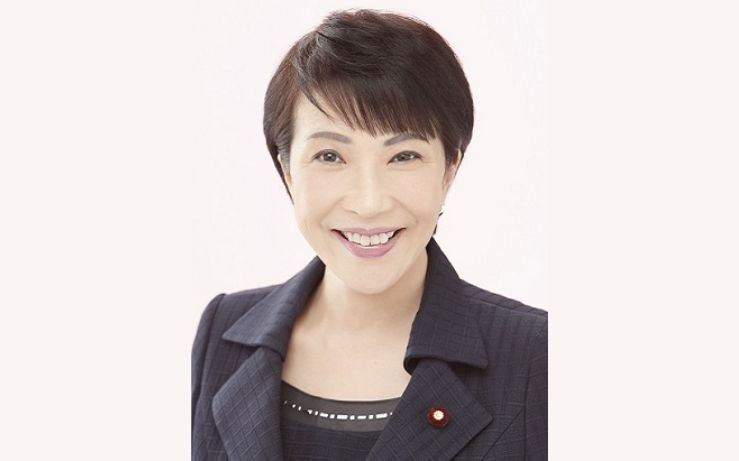History has been made in Japan, but it is a history forged in crisis and defined by a sharp and decisive turn to the right.
The nation’s parliament on Tuesday elected the ultraconservative Sanae Takaichi as the country’s first female prime minister, a landmark moment that was only made possible by a fragile, last-minute coalition deal with a new and more ideological partner.
The election of the 64-year-old protégé of the assassinated former Prime Minister Shinzo Abe ends a tumultuous three-month political vacuum that had gripped the nation since her party’s disastrous election loss in July.
But her ascent to power, far from being a moment of unifying triumph, has been a bruising and divisive affair that now threatens to pull the world’s fourth-largest economy onto a more hawkish and nationalistic path.
An alliance forged in desperation
Takaichi’s path to the premiership was a precarious one. Her victory, secured with 237 votes in the powerful lower house, was only possible because her struggling Liberal Democratic Party (LDP) managed to strike a new alliance with the right-wing Japan Innovation Party.
The deal was a lifeline, forged in the desperation that followed the collapse of the LDP’s decades-long partnership with the more centrist, Buddhist-backed Komeito party.
But this new and untested alliance is a fragile one.
It is still short of a majority in both houses of parliament, a reality that will force Takaichi to constantly court other opposition groups to pass any legislation. It is a precarious foundation for a new government, one that is already being seen as potentially unstable and short-lived.
The price of this new alliance is a clear and unambiguous shift to the right. The coalition agreement, signed just before the vote, is a reflection of Takaichi’s own hawkish and nationalistic views.
She is expected to emulate her mentor, Shinzo Abe, by pushing for a stronger military, a more assertive foreign policy, and a controversial revision of Japan’s pacifist constitution.
Her rise has already drawn concern from Japan’s neighbors, with her past prayers at the controversial Yasukuni Shrine being seen in Beijing and Seoul as a sign of a lack of remorse for Japan’s wartime aggression.
A baptism by fire, a nation divided
Takaichi, a former minister of economic security and internal affairs, faces an immediate and daunting baptism by fire.
With a thin diplomatic background, she must now prepare for a major policy speech, high-stakes talks with US President Donald Trump, and a series of crucial regional summits.
At home, the challenges are just as immense.
She must quickly tackle the rising cost of living and compile an economy-boosting stimulus package by the end of the year to address the deep and growing public frustration that led to her party’s recent election defeats.
And while her election is a historic moment for a nation often criticized for its slow progress on gender equality, Takaichi is no progressive icon.
Like her British idol, Margaret Thatcher, she is a staunch conservative who opposes same-sex marriage and allowing separate surnames for married couples, and has been a consistent stonewaller of measures for women’s advancement.
She has broken one of Japan’s highest glass ceilings, but the path she is about to chart for her nation remains a deeply uncertain and contentious one.
India’s PM Modi congratulates Sanae Takaichi
The congratulations came shortly after the Japanese parliament’s lower house officially appointed Takaichi as the nation’s new premier on Tuesday.
In a post on the social media platform X, Prime Minister Modi was effusive in his praise and forward-looking in his ambitions for the relationship.
“Heartiest congratulations, Sanae Takaichi, on your election as the Prime Minister of Japan. I look forward to working closely with you to further strengthen the India–Japan Special Strategic and Global Partnership,” Modi wrote.
He added that their deepening ties are not just a matter of bilateral importance, but of global consequence. “Our deepening ties are vital for peace, stability, and prosperity across the Indo-Pacific and beyond,” he stated, a clear and direct reference to the shared challenge of a more assertive China.
Heartiest congratulations, Sanae Takaichi, on your election as the Prime Minister of Japan. I look forward to working closely with you to further strengthen the India–Japan Special Strategic and Global Partnership. Our deepening ties are vital for peace, stability, and prosperity
9.4K
Reply
Copy link
A partnership with purpose
The India-Japan relationship is a multi-faceted and powerful one, a partnership built on a foundation of shared economic and defense interests.
Japan has become a key developmental partner for India, deeply involved in a number of the country’s most ambitious infrastructure projects.
But it is in the broader geopolitical arena of the Indo-Pacific that the alliance has found its most profound purpose.
The two nations work closely, both bilaterally and in multilateral forums like the Quad, a strategic security dialogue that also includes the United States and Australia.
As Takaichi prepares to formally assume her historic new role after a meeting with Emperor Naruhito, the message from New Delhi is clear: the partnership between the two Asian democracies is more important than ever.
The post In a historic vote, Sanae Takaichi becomes Japan’s first female prime minister appeared first on Invezz




































